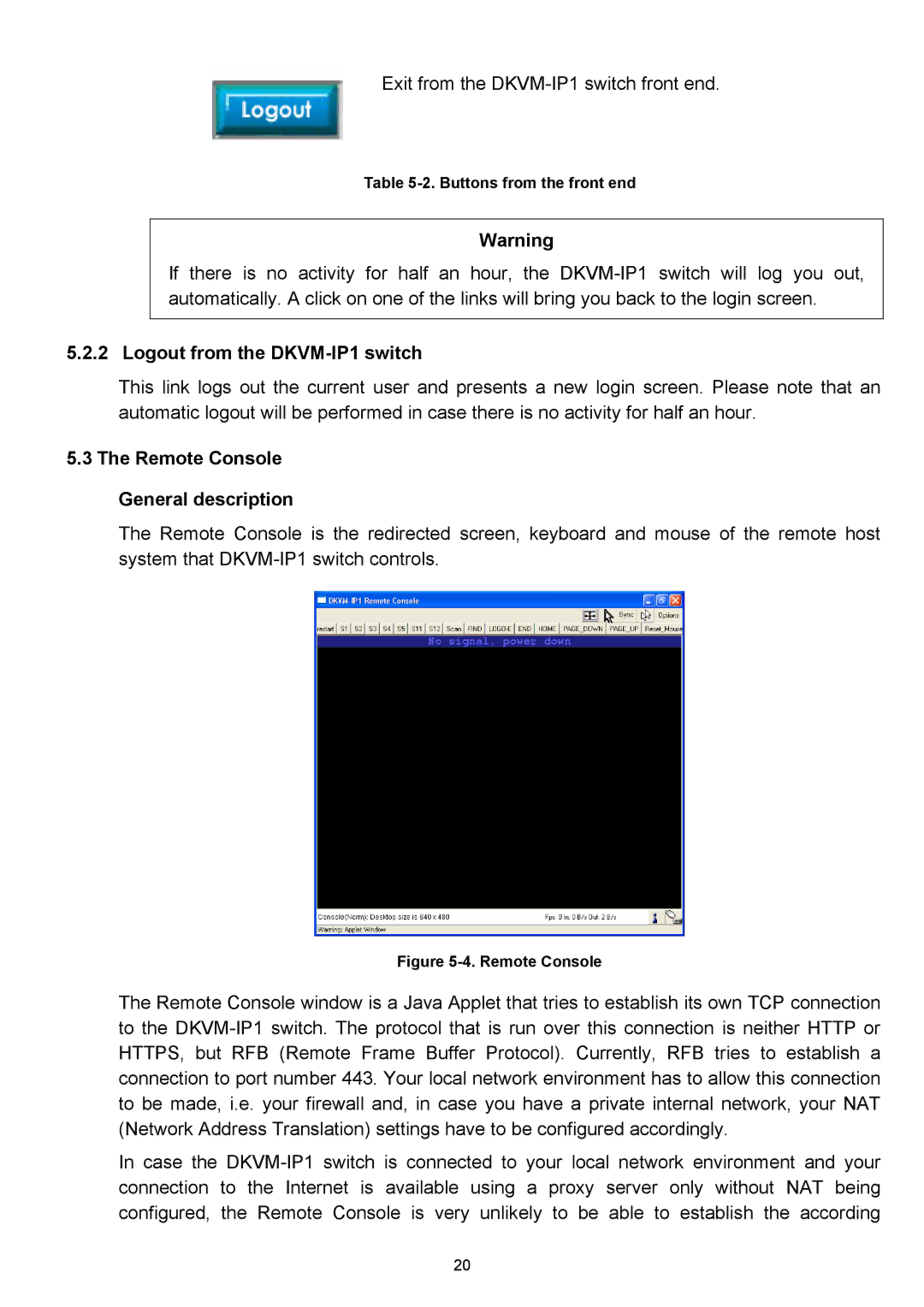
Exit from the DKVM-IP1 switch front end.
Table 5-2. Buttons from the front end
Warning
If there is no activity for half an hour, the DKVM-IP1 switch will log you out, automatically. A click on one of the links will bring you back to the login screen.
5.2.2 Logout from the DKVM-IP1 switch
This link logs out the current user and presents a new login screen. Please note that an automatic logout will be performed in case there is no activity for half an hour.
5.3 The Remote Console General description
The Remote Console is the redirected screen, keyboard and mouse of the remote host system that DKVM-IP1 switch controls.
Figure 5-4. Remote Console
The Remote Console window is a Java Applet that tries to establish its own TCP connection to the DKVM-IP1 switch. The protocol that is run over this connection is neither HTTP or HTTPS, but RFB (Remote Frame Buffer Protocol). Currently, RFB tries to establish a connection to port number 443. Your local network environment has to allow this connection to be made, i.e. your firewall and, in case you have a private internal network, your NAT (Network Address Translation) settings have to be configured accordingly.
In case the DKVM-IP1 switch is connected to your local network environment and your connection to the Internet is available using a proxy server only without NAT being configured, the Remote Console is very unlikely to be able to establish the according

